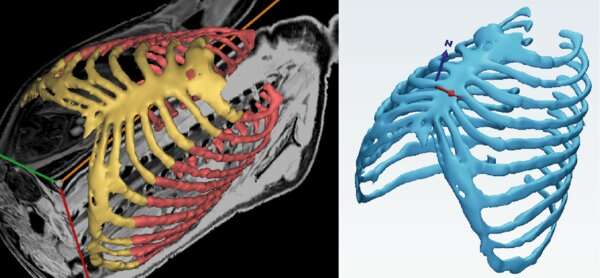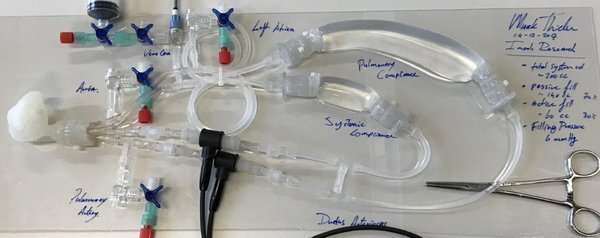Mark Thielen, a researcher from Eindhoven University of Technology, used 3D printing to create a lifelike manikin in order to improve the training given to neonatologists in resuscitating babies.
Every year, two million babies suffocate during birth which can result in lifelong damage. In order to reduce the occurrence of irreparable problems, having highly-trained medics on hand to take quick action is necessary.
However, Thielen explains, manikins currently used to train resuscitation of babies aren’t lifelike. This prompted him to create an improved manikin for his Ph.D. project.
“They have a purely mechanical design, which is optimized for massive production: cheap and indestructible,” he explains. “When doctors practice using these manikins, do they actually learn the right feeling? And, without measuring blood and air flow, can we determine the quality of the training?”
Thielen’s resulting 3D printed manikin was developed using an MRI scan taken of a real newborn. Every single detail of the baby was 3D printed, including chest bones, organs, and a circulatory system.
Thielen explains that he designed the baby with developing countries in mind, where the majority of premature births occur. Although a prototype costs €50,000 to 3D print, Thielen expects that it’ll be possible be able to ship the baby around the world so that those who require it for training can pay an affordable rental price.

Newborn Straight from a 3D Printer
The 3D printed baby is already improving the training of neonatologists at the Maxima Medical Center of Veldhoven.
To 3D print the baby, Thielen used strong, flexible plastics for the bones and soft silicone materials for the lungs, muscle, fat, skin and the heart.
“Three-dimensionally printing the rib cage was a real challenge, an enormous effort that required months of work,” says Thielen. “I spent hours and hours identifying the borders of every single bone in the MRI images, slice by slice. Often, having the images analyzed automatically by an image software gave unsatisfactory results, so I had to restart from scratch and do everything manually.”
Not only does the manikin look more like a baby, but it also provides real-time information on its heart rate and blood pressure. Furthermore, it measures how a user opens and positions its jaw and how effective the cardiac massage is.
Source: Medical Xpress

License: The text of "3D Printed Newborn Baby Manikin Improves Resuscitation Training" by All3DP is licensed under a Creative Commons Attribution 4.0 International License.
